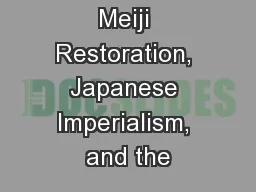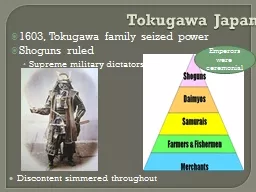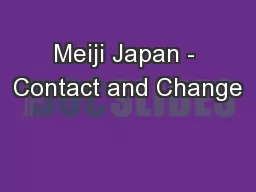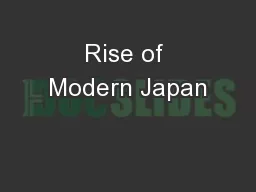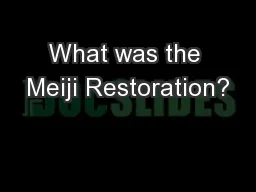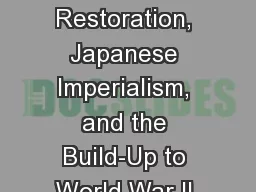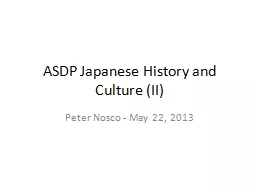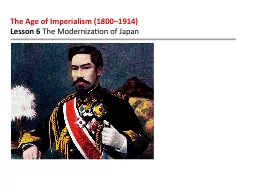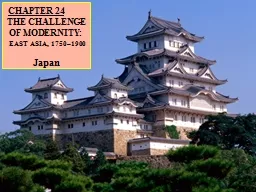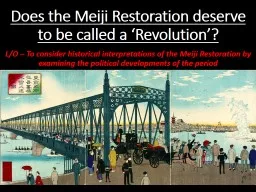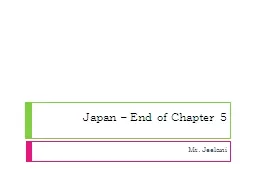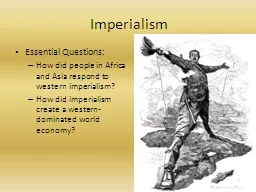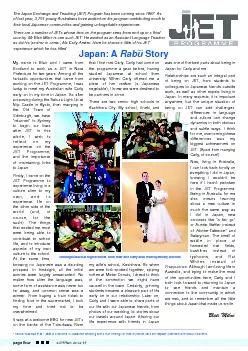PPT-JAPAN: The Meiji Restoration, Japanese Imperialism, and the
Author : yoshiko-marsland | Published Date : 2017-05-18
Student Handouts Inc The Tokugawa Shogunate Tokugawa family ruled Japan from 1603 until 1868 also known as the Edo period 1635 foreign trade limited to China
Presentation Embed Code
Download Presentation
Download Presentation The PPT/PDF document "JAPAN: The Meiji Restoration, Japanese I..." is the property of its rightful owner. Permission is granted to download and print the materials on this website for personal, non-commercial use only, and to display it on your personal computer provided you do not modify the materials and that you retain all copyright notices contained in the materials. By downloading content from our website, you accept the terms of this agreement.
JAPAN: The Meiji Restoration, Japanese Imperialism, and the: Transcript
Download Rules Of Document
"JAPAN: The Meiji Restoration, Japanese Imperialism, and the"The content belongs to its owner. You may download and print it for personal use, without modification, and keep all copyright notices. By downloading, you agree to these terms.
Related Documents

